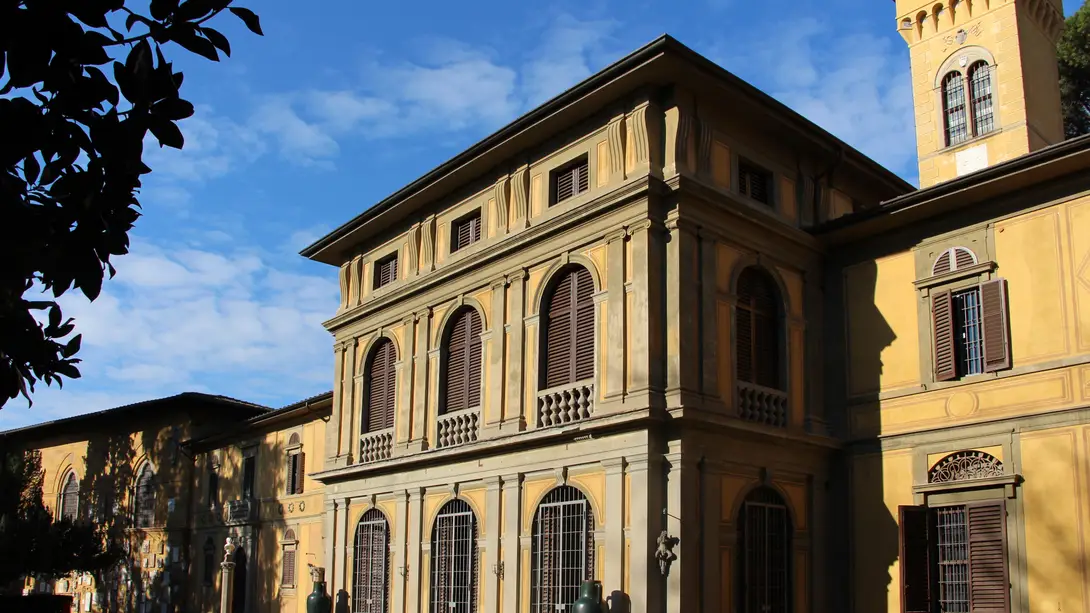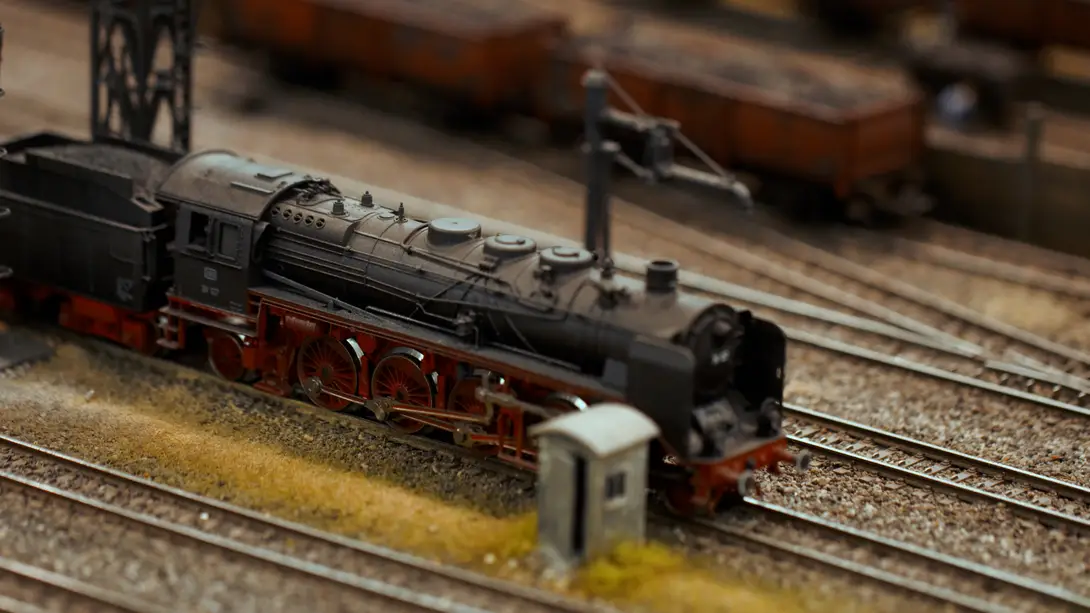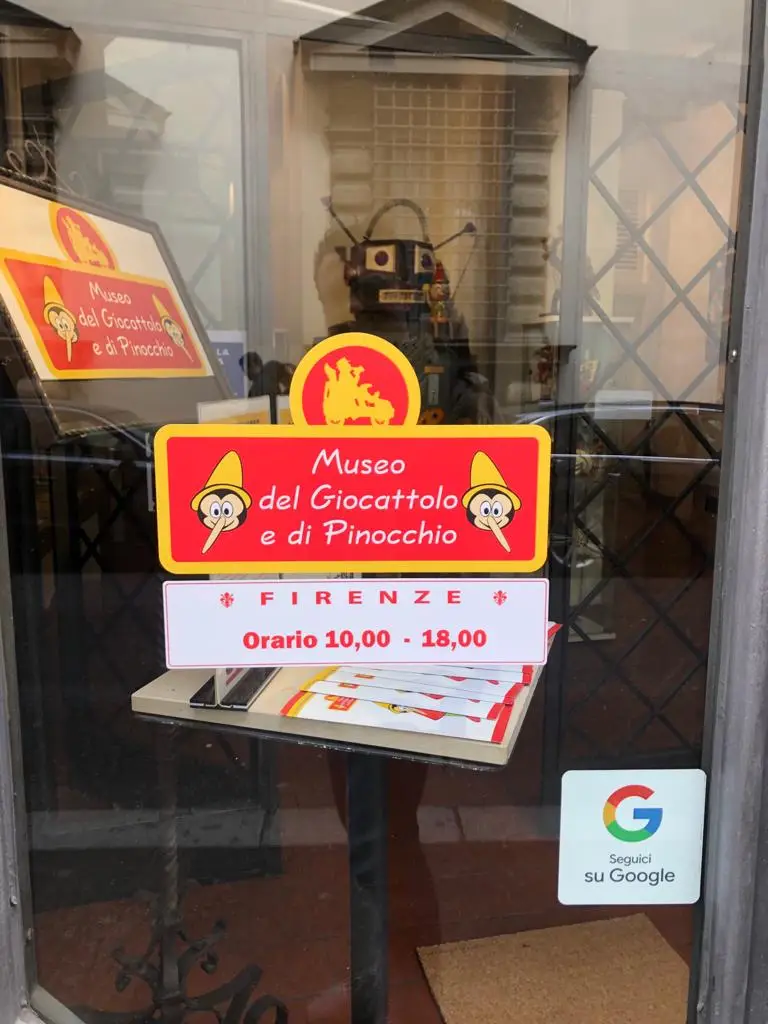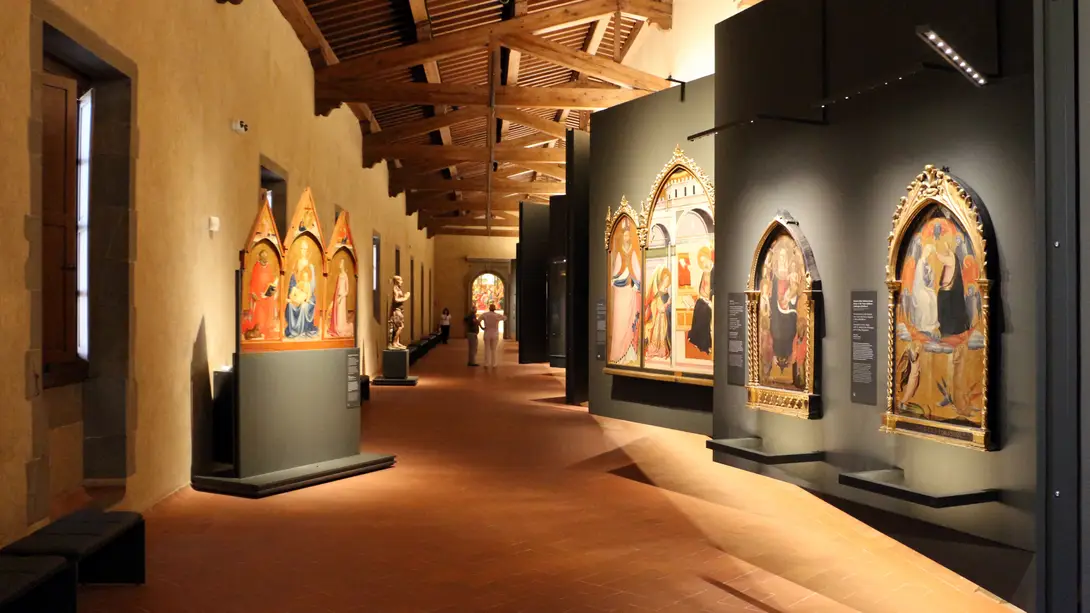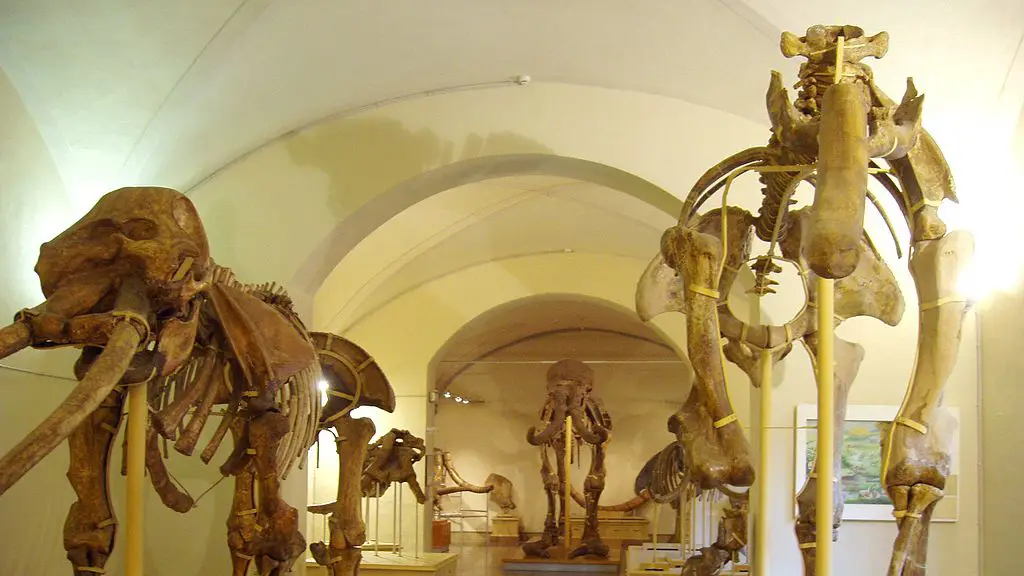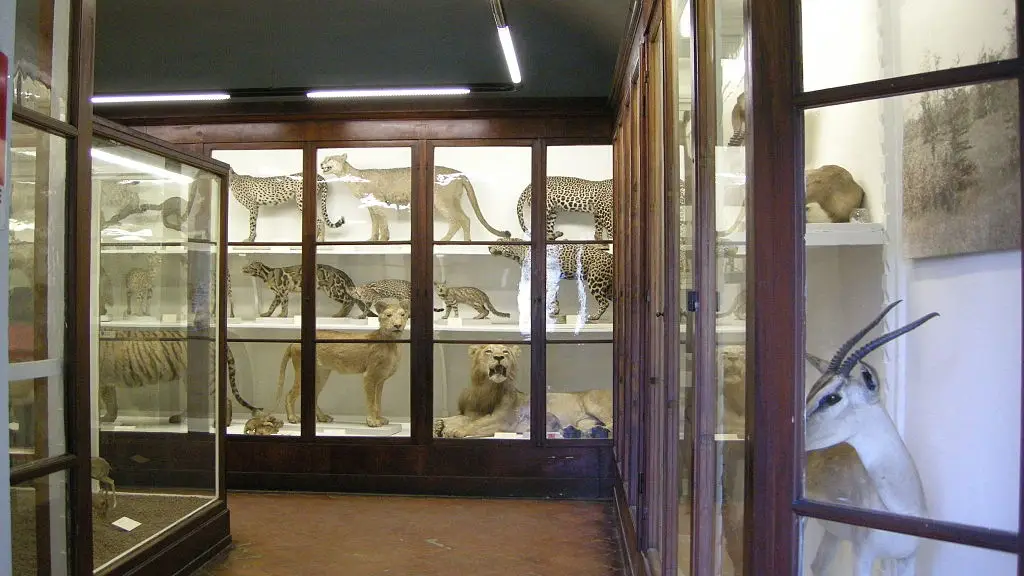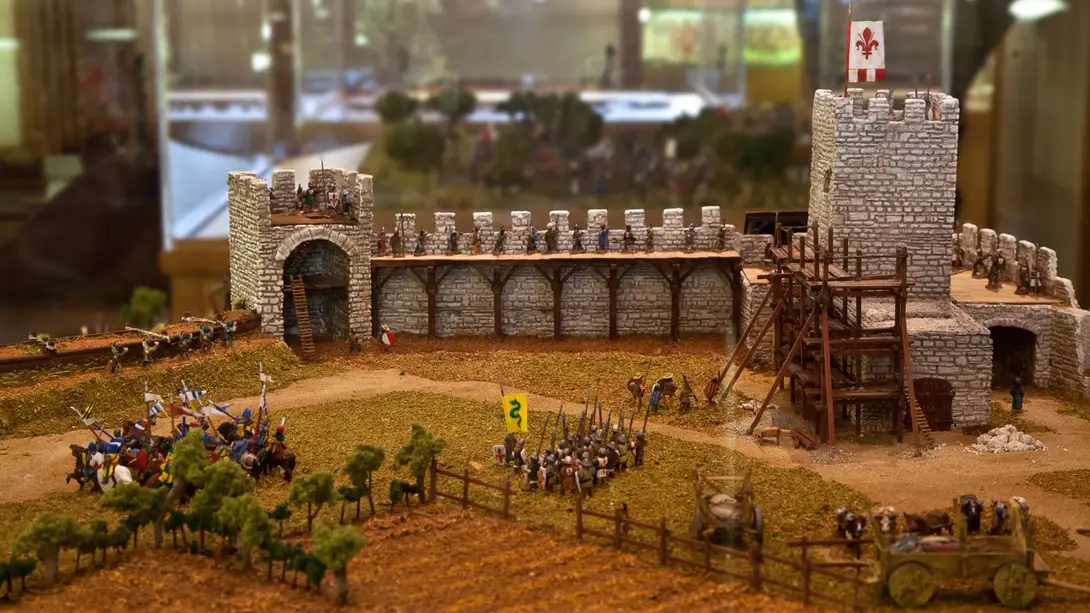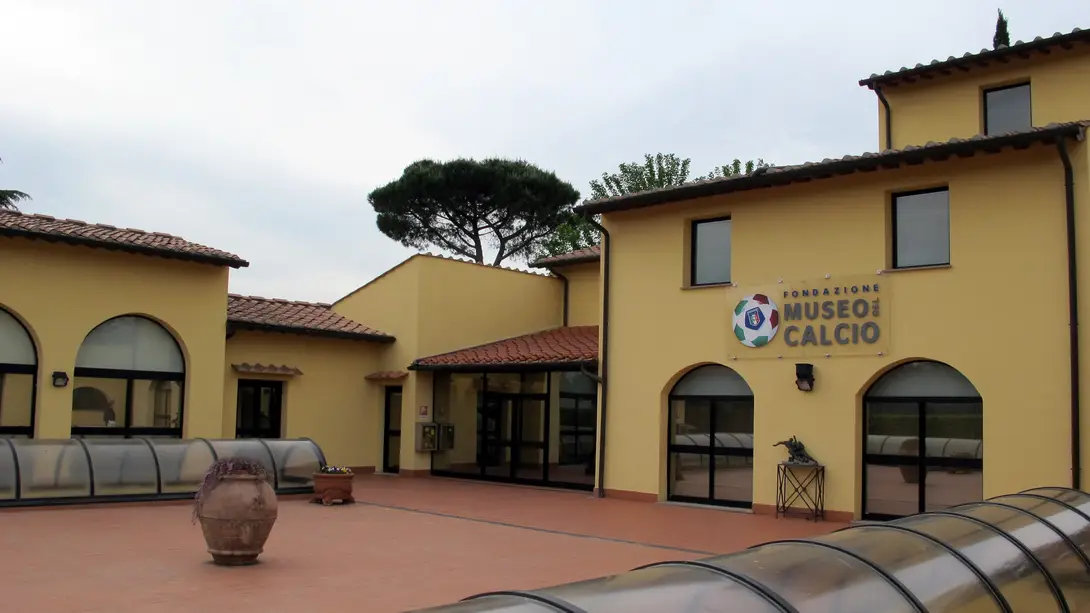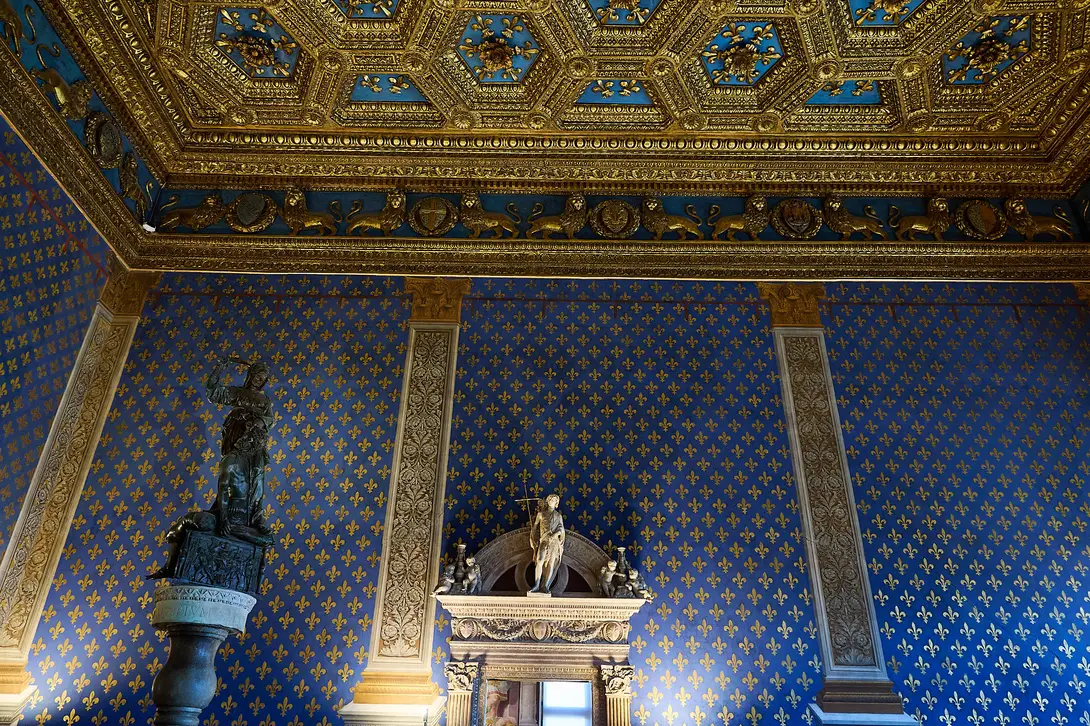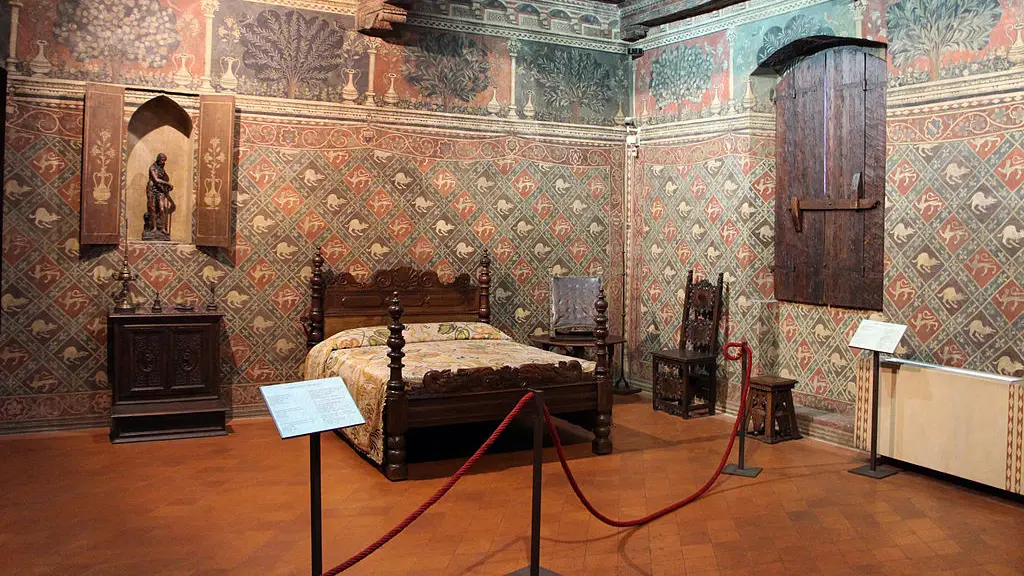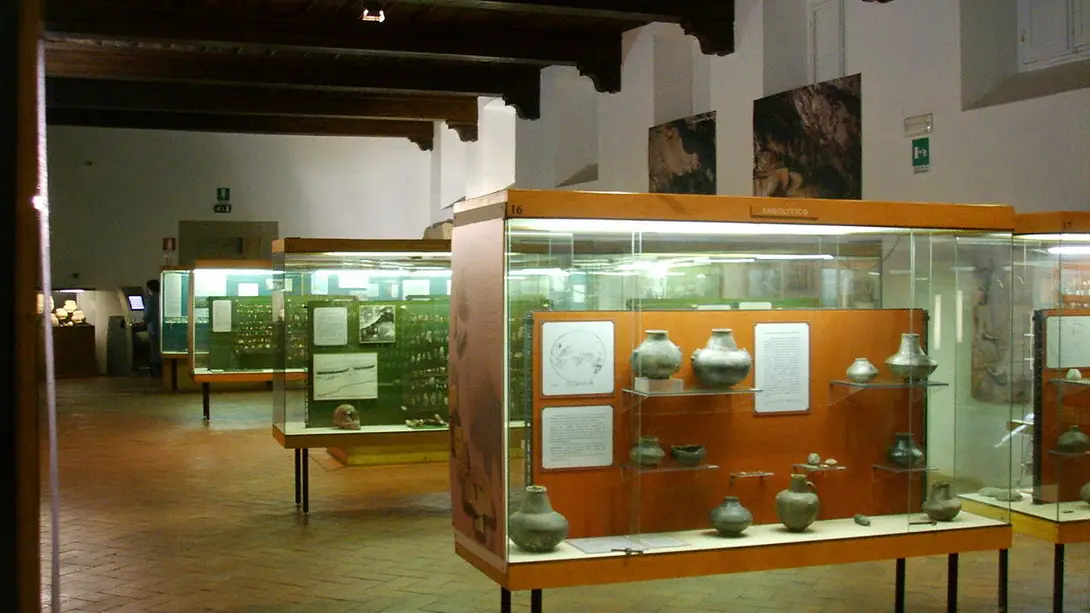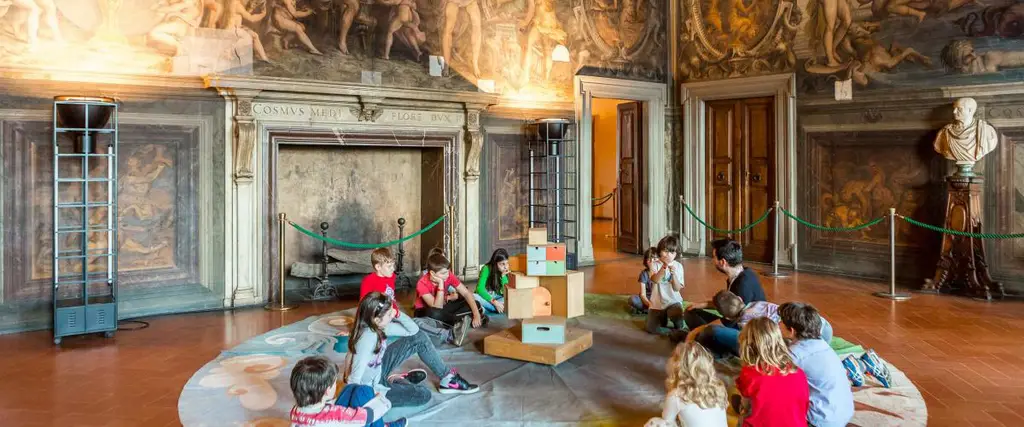
Families and Children
Florence is the perfect city for families with children. It has Egyptian mummies (Archaeological museum) dinosaur skeletons and fossilised whales (Palenthology museum), medieval suits of armour (Stibbert museum), frescoes with demons and devils, wax figures of the human body (Specola), Galileo's telescopes in his Museum, Hzero Museum (impressive miniature Trains museum), Pinocchio & Toys Museum, the Soccer Museum-Museo del Calcio (dedicated to the Azzurri, the National Team). The city and its surroundings are of history, waiting to be discovered in its streets and squares, and in its museums with trails and activities designed especially for the little ones. Not far from Florence you can't miss the toy soldiers museum (Calenzano).
The Association Mus.e organizes a very rich claendar of activities (guided tours, workshops) for families and children to discover the municipal museums, starting from Palazzo Vecchio.
Visiting the city with kids is like a big game, and the first task is finding the museums that best stimulate their natural curiosity. Without forgetting that exposing them to art means moulding the tourists of tomorrow, well-informed art specialists. To orient yourself in this world, the free publication Firenze for Families is essential. It is an illustrated booklet and map for families listing not only places in the city to visit but also in its surroundings, with more than 80 family-friendly spots including museums, palaces, squares, gardens and monuments.a guide + map designed for the little ones. You can collect at our infopoints or download online.
For the more technological children and teenagers, there are two apps, two videogames... to learn while having fun: Firenze Game (the free app to discover the city with an addicting game) and the Medici Game (an investigative video game interior of the Pitti Palace rebuilt in 3D).
The Mus.e Association, with the l’Istituto degli Innocenti, offer special activities for families and children,
The Family Tour provides ideas for routes along city streets or to explore its symbolic places equipped with explorers’ backpacks and an App. The Palazzo Strozzi Foundation offers a "Family Kit", containing material for both children and adults designed to help you experience the exhibition in the most entertaining and creative way.
And for science-lovers, the initiatives promoted by the Galileo Museum includes a series of themed tours and workshops that introduce kids to the world of science and its history through play.
Comune di Firenze
The places
Stages
Stibbert Museum
The Stibbert Museum, conceived by Frederick Stibbert (1838-1906), is a rare example of a 19th-century museum: an extraordinary collection of arms, armour and works of art is displayed in a series of rooms whose evocative layout was designed to evoke the atmosphere of the period and the places of origin of the various objects.
The collections include weapons, armour, costumes, objects of furniture and applied art, tapestries and paintings from the 16th to the 19th century, displayed in 60 rooms. The Sala della Cavalcata (the riding hall) is remarkable, where life-size European and Oriental knights are arrayed; the Japanese section includes, in addition to arms and armour, bronzes, costumes, lacquerware: it is one of the most important in the world outside Japan.
The park surrounding the villa, dotted with pavilions, statues, fake ruins and even a small Egyptian temple, reflects Stibbert's adherence to the romantic and eclectic taste typical of his time.
HZero - Train Museum
The Train Museum is the latest addition to the Florentine museums and is dedicated to the world of miniature trains and modelling, just a stone's throw from the central Santa Maria Novella railway station.
The heart of the museum is the 'Plastico San Giuliano' - so called by the curator, Marquis Giuseppe da San Giuliano - an immense area of 280 square metres that includes 126 trains in motion, through scenery, people, Italian and foreign landscapes, reconstructed with a truly surprising fidelity of detail. All in 1:87 scale.
A new museum space, enhanced by a model workshop, for everyone: young and adults, enthusiasts and collectors
The Museum of Toys and of Pinocchio
A new museum dedicated to toys has opened in Florence. The items exhibited (more than a thousand) date from the 18th century to the second half of the 20th century and are a combination of two different collections: the first one comes from the Museo del Giocattolo e del Bambino of Cormano (Milan), which has closed in order to move to Florence; while the second one is a collection of puppets and items concerning Pinocchio, that has been put together by Giuseppe Garbarino, president of the “Pinocchio a casa sua” association.
The museum is located in via dell’Oriuolo, just a few steps away from piazza Duomo and the Biblioteca delle Oblate.
Museo degli Innocenti
This museum collects the historical and artistic heritage of the ancient Spedale degli Innocenti, a building designed at the beginning of the 15th century byFilippo Brunelleschi, in order to welcome the abandoned children (the "Innocents"), in a complex full of refectories, cloisters and dormitories. The children were called nocentini (which is also a very popular family name in Florence).
The museum is made of two different parts: the Art Gallery houses works of art, especially paintings, made between the 14th and the 18th century, such as an “Adorazione dei Magi” by Domenico Ghirlandaio, a “Madonna col Bambino” attributed to Sandro Botticelli, and glazed terracottas by Luca and Andrea della Robbia; on the façade, terracotta roundels represent children in swaddling clothes, showing themselves to the world.
Another, touching part is the section of the museum dedicated to the memory of the lives of abandoned at the Spedale, and it features babies’ small objects left as a mean of identification, called signs.
The rich collection of documents in the Archive shows the life at the Spedale through the centuries.
The Bottega dei ragazzi (Children Workshop) offers activities for children between 3 and 11 with their families, applying the teaching of the Renaissance workshops: “learning by doing”.
The 13th century terrace hosts the Caffè del Verone, a café with a beautiful view, accessible even without the museum ticket.
Museo di Storia Naturale dell'Università di Firenze - Geology and Paleontology
The exhibition is dedicated to the fossils of large mammals, mollusks, and plants that illustrate the history of paleontology and are precious witnesses of the Earth's past.
Of great impact are the skeletons of southern mastodons and mammoths. There are also skeletons of a cavern lion, a leopard, a saber-toothed tiger who lived millions of years ago in Tuscany when the area was a savannah. Visitors can also admire skeletons of sirenians, large ancient herbivorous aquatic mammals, distant relatives of the elephants, and progenitors of the Dugongidae and the Lamantines still present in the Atlantic and the Indian Ocean.
The exhibition wraps up with the modern Sala della balena (the Whale Room), an immersive space in which the visitor can walk "on the bottom of the sea", next to the 10-metre long skeleton of a Balenopteridae lived three million years ago and today exhibited with the remains of the animals that have fed on the carcass, from the great sharks to the very small bone-eater worms.
The museum's website provides the schedule for guided tours and activities for families with children.
Museo di Storia Naturale dell'Università di Firenze - Zoology - La Specola
La Specola Museum, which is part of the Natural History Museum of the University of Florence, is the oldest scientific museum open to the public: it will celebrate its 250th anniversary in 2025!
The Museum's collections are directly descended from the Medici collections, which did not only cover art but also exhibits of naturalistic interest and mirabilia. The Specola takes its name from the astronomical observatory established here by Grand Duke Peter Leopold of Lorraine in the in the observation tower (specola).
Among the museum halls that can be visited by appointment is the Tribuna di Galileo, dating back to 1841, decorated with frescoes and marbles illustrating Italian scientific discoveriesfrom the Renaissance to Alessandro Volta.
The museum is unique because of its collections: an extraordinary zoological collection that offers an almost complete view of existing animals, as well as extinct ones; the anatomical wax halls made in the museum's workshop in the 18th-19th centuries include the works of Gaetano Zumbo and Clemente Susini; and the Hall of Skeletons, an evocative space dedicated to vertebrates large and small. These exhibitions are complemented by two new visit routes - Botanical Waxes and Mineralogy.
A science-themed museum that boasts an extraordinary wealth of interest, both for adults and children, for the zoology section and for the minerals, some of them large, from all over the world. Please, check the museum's website for guided tours and activities for families with children.
Museum of Historic Models
The educational exhibits in this museum combine model-making and historic reconstruction to introduce visitors to the principal events in Tuscan and Italian history.
On display detailed models starting from the Assyrians up to the Second World War: you get to know the Etruscan and Roman worlds,the chivalry of the Middle Ages and the period of the Comuni,the Renaissance, the Napoleonic Ageand through to the two world wars.
Fondazione Museo del Calcio
At the Technical Center of Coverciano there is this museum, which collects memorabilia and objects that represent the history of football (particularly of the Italian National Team) such as balls, jerseys, shoes, cups, medals.
By visiting it, the deeds of the great champions, the history of the Italian national team with its successes and of the Federationthrough more than 100 yearsof life are relived over time.The museum is also a digital documentation center with photographs and videos.
The Museum offers the opportunity, for schools and football teams, to play and work out on the FIGC Technical Center fields of Coverciano, two hours of training under the guidance of FIGC trainers.
Palazzo Vecchio - Monumental Rooms
Palazzo Vecchio is the city's symbolic monument and, for over seven centuries, the seat of its government; it bears extraordinary testimony to all the salient phases of Florence's history and art. It overlooks, with its imposing bulk, Piazza della Signoria.
The Monumental Quarters form the heart of the museum itinerary and include a series of rooms, starting with the grand Salone dei Cinquecento (with a decoration that celebrates Florence, and in particular the Medici dynasty following the advent of Grand Duke Cosimo I), overlooked by the precious Studiolo di Francesco I.
A little further on is the Sala dei Duecento. On the upper floors one can admire: the Sala dei Gigli, the Sala dell'Udienza, as well as the so-called Quartieri Medicei (Eleonora di Toledo's Quarters and the Quartiere degli Elementi). Also of interest is the Sala del mappamondo (or the Sala del Guardaroba), with ancient geographical maps, and the Cancelleria, which was the office of Niccolò Machiavelli during the first Florentine Republic.
The decorations of the various rooms were made between the 15th and 16th centuries by important artists, including Ghirlandaio, Bronzino, Vasari and his assistans.
Along the museum itinerary are some masterpieces of Renaissance sculpture: Michelangelo's Genius of Victory (Salone dei Cinquecento), Donatello's bronze group of Judith and Holofernes in the Sala dei Gigli, Verrocchio's Puttino (the one in Michelozzo's courtyard, the main entrance to the Palazzo, is a copy).
Another museum tour of Palazzo Vecchio include the Arnolfo Tower, with breathtaking views from the top.
All children who come to Florence should be taken to Palazzo Vecchio. The Mus.e Association organises daily activities for families with children of different age groups, from 4 years upwards, by reservation only. For a fun visit on your own, it is possible to rent a Family Kit (recommended for children from 6 years of age) with a map and other useful items for a visit to the Palazzo or the historical centre under the banner of knowledge, wonder and sharing.
Museo di Palazzo Davanzati
Originally built in the mid-14th century for the Davizzi family and then acquired by the Davanzati in the 15th century, the palace is an extraordinary example of a 14th-century Florentine house, with some interesting interior architecture and mural decorations with geometric motifs that were typical of the age.
Furniture, paintings, tapestries and domestic objects give a good overall picture of what an upper-class Florentine home would have been like between the 14th and 17th centuries; there are also many paintings with secular and religious themes, sculptures and a collection of ceramics and majolicas from various manufactories. There is also one of the richest lace collections in Italy, displayed in a dedicated room on the third floor.
Museo e Istituto Fiorentino di Preistoria
Occupying the first floor of the historic Convent of the Oblate Nuns, the museum has a rich collection of originalitems and reproductions illustrating the history of the human racefrom the Stone Age through to the Metal Age. The items on display are from Italy, elsewhere in Europe, Asia and Africa.
The museum also has a section specially designedfor nursery school children, who are introduced to the prehistoric and ancient world via exhibits basedonfairy tales and games.
During the year, the museum organizes activities for families with children from 4 years up, guided tours and workshops.
The Uffizi Gallery
With its immense artistic legacy, the Uffizi Gallery, now The Uffizi, is one of the most important museums in the world. Following a substantial reorganization in the 17th century, which led to the transfer of some collections (arms, scientific instruments, archaeological finds, ancient and modern bronzes) to other sites and the establishment of new museums, the Uffizi mainly became a picture gallery, with thousands of works ranging from the 13th to the 18th centuries. After the suppression of churches and convents in the 18th and 19th centuries, many works of ecclesiastical provenance swelled the gallery’s collections; other important paintings were acquired at the beginning of the 20th century.
Masterpieces held in the museum include: the large altarpieces of Cimabue and Giotto; 14th-century Sienese art (including a fine Annunciation by Simone Martini); a rich spectrum of 15th-century art from Tuscany and central Italy, with works by Masaccio and Masolino (Madonna and Child with Saint Anne), Filippo Lippi, Botticelli (Birth of Venus and the Primavera), Piero della Francesca (Portraits of Duke Federico da Montefeltro and his Duchess Battista Sforza of Urbino) and Gentile da Fabriano (Adoration of the Magi).
The rooms devoted to 16th-century painting contain works by the masters of the principal Italian schools: from the Adoration of the Magi by Leonardo da Vinci to Michelangelo and Raphael, while Titian, with his Venus of Urbino, Veronese and Tintoretto represent the flowering of painting in the Veneto. Foreign artists are also well represented, with works by Albrecht Dürer, Hans Holbein and El Greco.
The series of 17th-century works opens with Caravaggio’s Bacchus, and features a rich range of work from the major European schools, including Rubens, Van Dyck and the self-portraits by Rembrandt. Finally, Canaletto and Guardi, together with Longhi and Tiepolo, offer a sample of 18th-century art. In addition, the gallery holds ancient sculptures, miniatures and tapestries from the Medici collections. Work is currently underway on the ‘New Uffizi’, which will double the amount of exhibition space, permitting the display of works previously inaccessible to the public.
A map of suggested paths in the gallery - including their duration - is available on the Uffizi Official Website.
Palazzo Vecchio - Monumental Rooms
Palazzo Vecchio is the city's symbolic monument and, for over seven centuries, the seat of its government; it bears extraordinary testimony to all the salient phases of Florence's history and art. It overlooks, with its imposing bulk, Piazza della Signoria.
The Monumental Quarters form the heart of the museum itinerary and include a series of rooms, starting with the grand Salone dei Cinquecento (with a decoration that celebrates Florence, and in particular the Medici dynasty following the advent of Grand Duke Cosimo I), overlooked by the precious Studiolo di Francesco I.
A little further on is the Sala dei Duecento. On the upper floors one can admire: the Sala dei Gigli, the Sala dell'Udienza, as well as the so-called Quartieri Medicei (Eleonora di Toledo's Quarters and the Quartiere degli Elementi). Also of interest is the Sala del mappamondo (or the Sala del Guardaroba), with ancient geographical maps, and the Cancelleria, which was the office of Niccolò Machiavelli during the first Florentine Republic.
The decorations of the various rooms were made between the 15th and 16th centuries by important artists, including Ghirlandaio, Bronzino, Vasari and his assistans.
Along the museum itinerary are some masterpieces of Renaissance sculpture: Michelangelo's Genius of Victory (Salone dei Cinquecento), Donatello's bronze group of Judith and Holofernes in the Sala dei Gigli, Verrocchio's Puttino (the one in Michelozzo's courtyard, the main entrance to the Palazzo, is a copy).
Another museum tour of Palazzo Vecchio include the Arnolfo Tower, with breathtaking views from the top.
All children who come to Florence should be taken to Palazzo Vecchio. The Mus.e Association organises daily activities for families with children of different age groups, from 4 years upwards, by reservation only. For a fun visit on your own, it is possible to rent a Family Kit (recommended for children from 6 years of age) with a map and other useful items for a visit to the Palazzo or the historical centre under the banner of knowledge, wonder and sharing.
